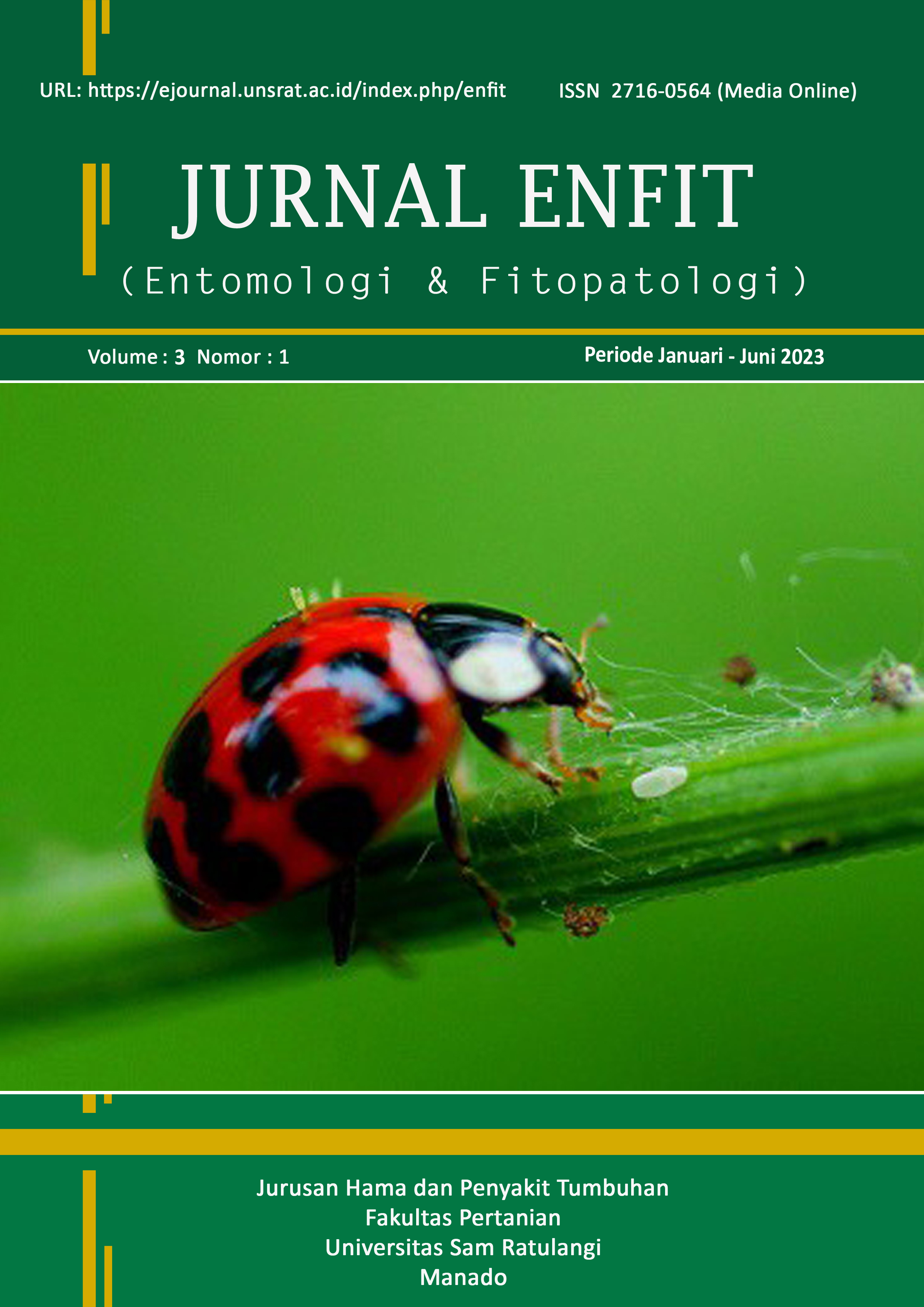Penggunaan Perangkap Warna Dengan Umpan Keong Mas untuk mengetahui Populasi Walang Sangit (Leptocorisa oratorius F.) pada Tanaman Padi Sawah
Abstract
This study aims to determine the population of L. oratorius based on the use of colored traps baited with golden snail. The research was carried out at paddy rice production centers in Langowan District, Minahasa Regency. This area was selected as an endemic area for the population of L. oratorus. The time needed for the research was approximately 4 months from May to August 2021. This study was arranged in a randomized block design (RBD), consisting of 5 color treatments and repeated 3 times. The treatment was a container colored red, blue, green, yellow, and without color (transparent) which was given golden snail organic matter. Each color of the container is hung by one organic material bait in the trap, the distance between the color of the container for each treatment is 5 m. The color treatment is randomized in blocks of observation or repetition. For 3 days the organic matter bait in paddy rice planting was then replaced with a new organic bait that had been fermented for the installation of the second trap media based on the color of the container. Laying traps on paddy rice plants 8 wap, 9 wap and 10 wap. The use of transparent traps had a higher population size of 23.60 on average, compared to the use of red traps of 19.66 individuals, yellow traps of 17 individuals, green traps of 16.33 individuals and blue traps of 15 individuals.
Keywords: color trap, golden snail, Leptocorisa oratorius

